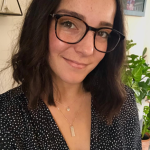
In the UK, 1 in every 700 babies are born with cleft lip and/or palate (NHS, 2020). Most infants with cleft palate receive full restorative surgery, but up to half of them do not reach full speech proficiency (Wren 2017). My research aims to better understand why speech difficulties persist in infants who have had successful cleft palate repair surgery through an analysis of early vocal production. The methodology integrates an established theory of speech acquisition presented by Vihman (2014:121). The articulatory filter hypothesis (AFH) proposes that infants notice words in their input speech that match their production, which, in turn, encourages a matching behaviour of phoneme-babble resemblances that encourage further vocal production. The AFH foregrounds the significance of production in early speech and highlights the phonological feedback-loop as a key foundation for later linguistic advances. Exploration of this theory could elucidate the role of matching to the acoustic/phonetic properties of caregiver input for reaching target-like speech.
Research Questions:
-How do the acoustic-phonetic properties of babbled consonants at 13-14 months differ between typically developing infants and infants after cleft palate repair?
-To what extent do CP infants respond to the sounds of caregiver speech in their own babble?
-To what extent do patterns of babbling and caregiver input matching predict speech and language outcomes at 24 and 36 months?
My research will bring a new perspective to an established theory of speech acquisition by considering Vihman’s AFH framework in the context of a clinical speech disorder. It will explore the extent to which an infant’s own vocalisations support/disrupt their path to full phonological proficiency after cleft palate restoration. The research could impact our understanding of the articulatory feedback-loop in the developmental processes of children with speech disorders and may support clinical provisions for infants after cleft palate repair.

